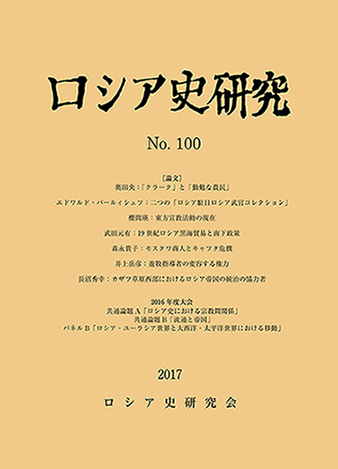Volume 100
Displaying 1-22 of 22 articles from this issue
- |<
- <
- 1
- >
- >|
-
2017Volume 100 Pages App1
Published: December 15, 2017
Released on J-STAGE: March 19, 2024
Download PDF (78K) -
2017Volume 100 Pages App2-App3
Published: December 15, 2017
Released on J-STAGE: March 19, 2024
Download PDF (565K)
-
2017Volume 100 Pages 3-28
Published: December 15, 2017
Released on J-STAGE: March 19, 2024
Download PDF (1128K) -
2017Volume 100 Pages 29-53
Published: December 15, 2017
Released on J-STAGE: March 19, 2024
Download PDF (1400K)
-
2017Volume 100 Pages 54-56
Published: December 15, 2017
Released on J-STAGE: March 19, 2024
Download PDF (803K) -
2017Volume 100 Pages 56-60
Published: December 15, 2017
Released on J-STAGE: March 19, 2024
Download PDF (869K) -
2017Volume 100 Pages 61-63
Published: December 15, 2017
Released on J-STAGE: March 19, 2024
Download PDF (865K) -
2017Volume 100 Pages 63-65
Published: December 15, 2017
Released on J-STAGE: March 19, 2024
Download PDF (839K)
-
2017Volume 100 Pages 66-93
Published: December 15, 2017
Released on J-STAGE: March 19, 2024
Download PDF (1115K) -
2017Volume 100 Pages 94-118
Published: December 15, 2017
Released on J-STAGE: March 19, 2024
Download PDF (1525K) -
2017Volume 100 Pages 119-144
Published: December 15, 2017
Released on J-STAGE: March 19, 2024
Download PDF (1729K) -
2017Volume 100 Pages 145-165
Published: December 15, 2017
Released on J-STAGE: March 19, 2024
Download PDF (1138K) -
2017Volume 100 Pages 166-190
Published: December 15, 2017
Released on J-STAGE: March 19, 2024
Download PDF (1051K)
-
2017Volume 100 Pages 191-198
Published: December 15, 2017
Released on J-STAGE: March 19, 2024
Download PDF (1117K) -
2017Volume 100 Pages 198-204
Published: December 15, 2017
Released on J-STAGE: March 19, 2024
Download PDF (1079K) -
2017Volume 100 Pages 204-209
Published: December 15, 2017
Released on J-STAGE: March 19, 2024
Download PDF (1141K) -
2017Volume 100 Pages 209-215
Published: December 15, 2017
Released on J-STAGE: March 19, 2024
Download PDF (1141K) -
2017Volume 100 Pages 215-222
Published: December 15, 2017
Released on J-STAGE: March 19, 2024
Download PDF (1155K)
-
2017Volume 100 Pages 223
Published: December 15, 2017
Released on J-STAGE: March 19, 2024
Download PDF (581K)
-
2017Volume 100 Pages 224-228
Published: December 15, 2017
Released on J-STAGE: March 19, 2024
Download PDF (848K)
-
2017Volume 100 Pages 229
Published: December 15, 2017
Released on J-STAGE: March 19, 2024
Download PDF (695K) -
2017Volume 100 Pages 230-233
Published: December 15, 2017
Released on J-STAGE: March 19, 2024
Download PDF (484K)
- |<
- <
- 1
- >
- >|
